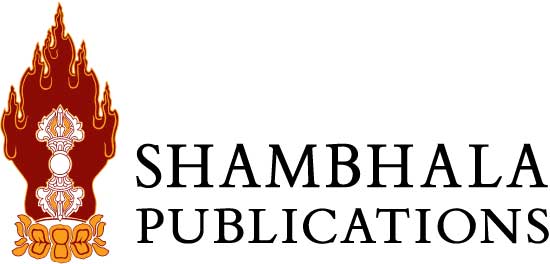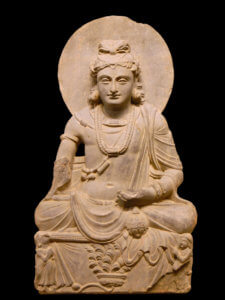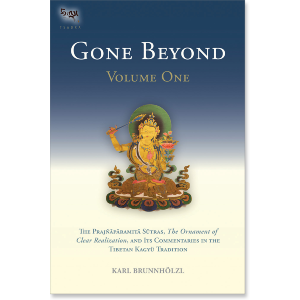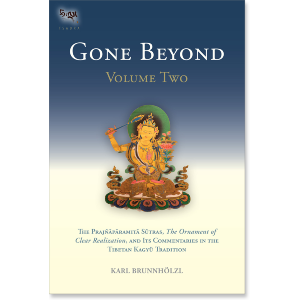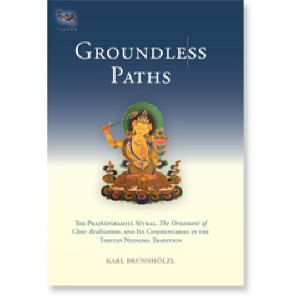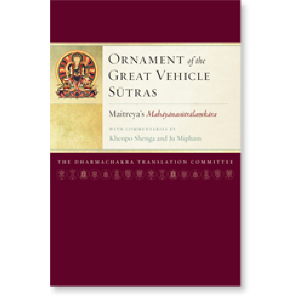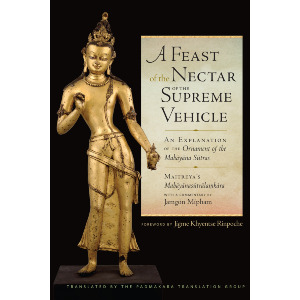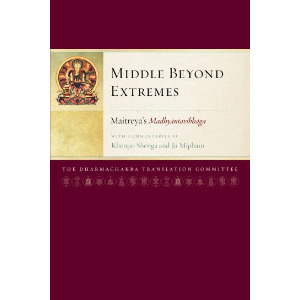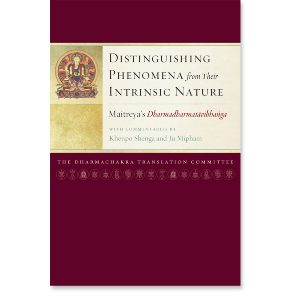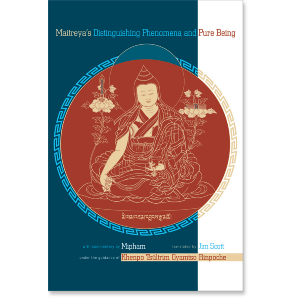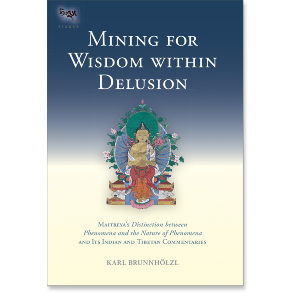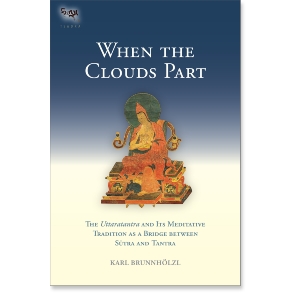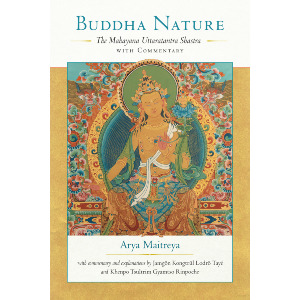The five works that the Tibetan tradition ascribes to Maitreya resemble zip files that contain all the profound and vast topics of the Buddhist teachings. In their traditional order: The Ornament of Clear Realization comments on the emptiness taught in the Prajnaparamita Sutras and on what happens in the minds of bodhisattvas familiarizing themselves with emptiness on the paths and bhumis.
Related Books
$54.95 - Hardcover
$44.95 - Hardcover
$54.95 - Hardcover
The Ornament of Mahayana Sutras is a synopsis of all topics of those mahayana sutras that are not covered by The Ornament of Clear Realization and The Ultimate Continuum of the Mahayana.
Ornament of the Great Vehicle Sutras
$69.95 - Hardcover
A Feast of the Nectar of the Supreme Vehicle
$69.95 - Hardcover
The Distinction between the Middle and Extremes explains the vast paths of all three yanas, emphasizing the view of Yogācāra (including the Yogācāra Middle Way) and the distinctive features of the mahāyāna.
The Distinction Between Phenomena and Their Nature discusses the difference between samsaric confusion and the liberating power of nonconceptual wisdom-the heart essence of all profound sutras.
Distinguishing Phenomena from Their Intrinsic Nature
$24.95 - Hardcover
Maitreya's Distinguishing Phenomena and Pure Being
$24.95 - Paperback
Mining for Wisdom within Delusion
$39.95 - Hardcover
Finally, The Ultimate Continuum of the Mahāyāna is a general commentary on buddha nature and represents a bridge between sutra and tantra.
$49.95 - Hardcover
$34.95 - Paperback
Thus, these five texts are mainly based on prajnaparamita, the classical teachings of Yogācāra (which are not identical with what is called "the Mind-Only School"), and the instructions on “Buddha nature” (tathāgatagarbha). Different Tibetan masters have voiced all kinds of opinions about the Maitreya texts representing the views of certain Buddhist schools, such as “Mind Only” (cittamātra), Yogācāra, Madhyamaka, or Shentong. However, as far as one's practice goes, says Thrangu Rinpoche, the tutor of the seventeenth Karmapa, it is necessary to determine-even in the Madhyamaka view - that appearances are nothing but mind, to resolve that mind is empty, and to realize mind's emptiness in meditation. According to the so-called "Mind-Only School," that mind is ultimately existent, but nothing like that is said anywhere in the Maitreya texts. So from that point of view, it can be said that all five texts belong to Madhyamaka in general. In particular, The Distinction Between Phenomena and Their Nature and The Ultimate Continuum present the view of the Shentong Madhyamaka School and are also considered to be foundations for Mahamudra.
In any case, Maitreya's works are crucial and celebrated because they provide a comprehensive overview of all the essential elements of mahāyāna motivation, view, meditation, conduct, and fruition. Being classical Indian works, they are not exactly light bedtime reading, but together with their commentaries (the extractors of the zip files) they paint a complete and detailed picture of mahāyāna Buddhism.
Now, different from the above traditional order of these five texts, a more accessible way for contemporary dharma students to study them is to begin with The Ultimate Continuum since it is the easiest one and discusses the nature of our mind as the very basis of everything on the Buddhist path. Next, The Distinction Between Phenomena and Their Nature enables us to discriminate ignorance and its manifestations from wisdom as the motor of the path to liberation. The Distinction between the Middle and Extremes explains the profound Middle Way and the basic principles of all three yanas. The Ornament of the Mahayana Sutras fills in the details of bodhisattva motivation, meditation, conduct, and fruition. Finally, The Ornament of Clear Realization as the most complex text combines the profundity of emptiness with the vastness of all paths and bhumis.
About the Author:
Karl Brunnhölzl, MD, was trained as a physician and also studied Tibetology. He received his systematic training in Tibetan language and Buddhist philosophy and practice at the Marpa Institute for Translators, founded by Khenpo Tsultrim Gyamtso Rinpoche. Since 1989 he has been a translator and interpreter from Tibetan and English.
